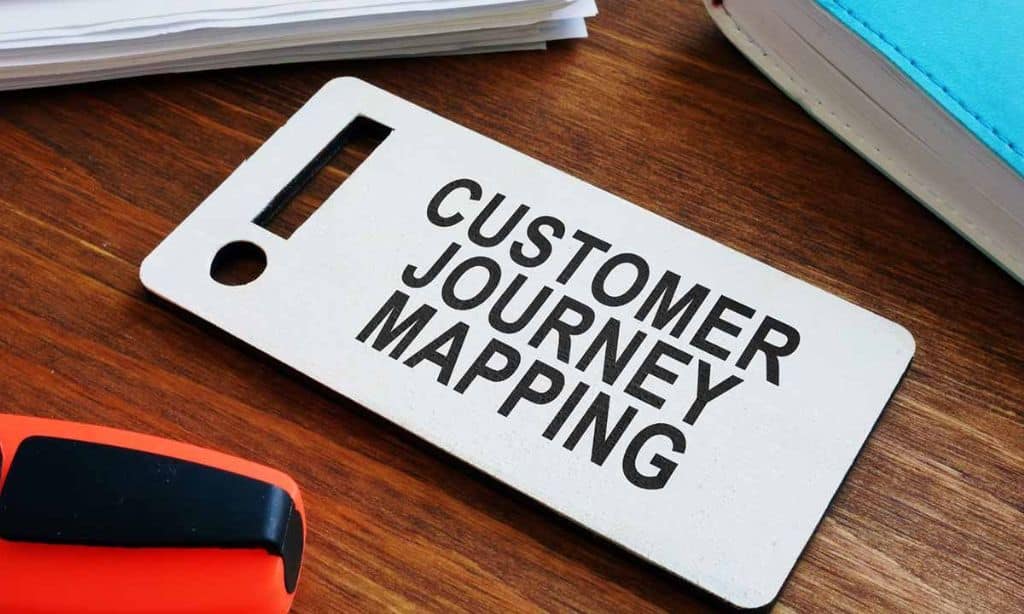Small businesses are the backbone of Germany’s economy. To compete in 2025 and beyond, small business owners must adopt smarter strategies to streamline their processes and achieve sustainable growth. One such powerful tool is business mapping. Business mapping helps businesses identify their operations, plan their goals, and visualize their growth journey.
In Germany, where small and medium-sized enterprises (SMEs) contribute significantly to the economy, business mapping is essential for success.
In this article, we explore 10 ways to transform your small business in Germany through business mapping in 2025.
From optimizing workflows to exploring new markets, these strategies will help you improve efficiency and set your business on the path to growth.
What is Business Mapping?
Business mapping is the process of visually outlining a company’s processes, goals, and resources to improve operations.
By creating a visual map, businesses can identify areas that need improvement, eliminate inefficiencies, and set clear objectives for the future.
Key Benefits of Business Mapping:
| Benefit | Description |
| Process Improvement | Identify and remove bottlenecks to streamline operations. |
| Enhanced Decision Making | Use visual data to make better and faster business decisions. |
| Goal Setting | Set clear, measurable goals to track progress. |
| Resource Optimization | Allocate human, financial, and time resources effectively. |
| Market Expansion | Plan entry into new geographic markets, such as different German states. |
Business mapping is particularly valuable in Germany’s dynamic SME landscape, where competition is high, and efficiency is key.
Why Business Mapping is Important for Small Businesses in Germany
Germany’s small businesses are a vital part of its economy. According to the Federal Ministry for Economic Affairs and Climate Action, SMEs make up over 99% of all businesses in Germany and account for nearly 60% of the workforce.
However, with rising competition, rapid digital transformation, and new market challenges, SMEs must operate efficiently to stay relevant.
This is where business mapping becomes crucial:
- Improves Efficiency: Identify unnecessary processes and optimize workflows.
- Enhances Customer Satisfaction: Map customer journeys to understand and meet their needs better.
- Supports Digital Transformation: Plan the integration of new technologies effectively.
By implementing business mapping, small businesses can maintain their competitiveness in Germany’s growing economy and prepare for future challenges in 2025.
10 Ways to Transform Your Small Business with Business Mapping
1. Identify and Streamline Business Processes
Many small businesses in Germany need more efficient processes that save time and resources. Business mapping helps identify these bottlenecks and streamline workflows.
Steps to Streamline Processes:
- Map out all existing processes using flowcharts.
- Identify redundant steps or tasks.
- Implement tools to automate repetitive tasks, like invoicing or inventory management.
| Tool | Purpose | Example |
| Lucidchart | Process visualization | Workflow mapping |
| Trello | Task management and optimization | Task tracking |
| Asana | Team collaboration and projects | Project management |
Example: A small bakery in Munich reduced manual inventory tracking time by 40% using automated inventory mapping tools.
2. Optimize Resource Allocation
Efficient resource allocation ensures that your workforce, budgets, and time are used productively, enabling small businesses to focus on their core strengths.
By carefully mapping out resources, business owners can reduce waste, improve productivity, and ensure every investment drives measurable results.
This becomes especially crucial in Germany’s competitive SME sector, where smart resource management is often the key to sustainable growth and long-term success.
How Business Mapping Helps:
- Map out team roles and responsibilities.
- Visualize budgets and project needs.
- Allocate resources where they are most needed.
| Resource Area | Business Mapping Solution |
| Staffing | Map roles to reduce overlapping responsibilities. |
| Budget Planning | Visualize expenses and identify cost-saving areas. |
| Time Management | Plan workflows to optimize time usage. |
Tip: Use tools like Microsoft Visio to create resource allocation maps that improve efficiency.
3. Enhance Customer Journey Mapping
Understanding the customer journey is essential for improving customer satisfaction and retention.
A well-mapped customer journey allows businesses to identify pain points, optimize interactions, and create a seamless experience for their clients.
By tracking every touchpoint, from awareness to post-purchase, small businesses in Germany can tailor their strategies to meet customer expectations effectively.
This not only boosts loyalty but also helps drive long-term business growth and positive word-of-mouth referrals.
Steps to Create a Customer Journey Map:
- Identify customer touchpoints (e.g., website visits, phone calls).
- Map out customer experiences at each stage.
- Improve processes to remove friction points.
| Customer Journey Stage | Mapping Focus |
| Awareness | How do customers discover your business? |
| Consideration | How do they evaluate your offerings? |
| Purchase | How seamless is the buying process? |
| Post-Purchase | How do you ensure repeat business? |
Example: A clothing store in Berlin improved online conversions by 30% by identifying and fixing issues in their checkout process.
4. Integrate Technology and Digital Tools
Business mapping helps identify areas where technology can improve operations. Tools like ERP (Enterprise Resource Planning) and CRM (Customer Relationship Management) are essential for growth.
| Technology | Purpose | Examples |
| ERP Software | Manage inventory and finances | SAP ERP |
| CRM Software | Manage customer relationships | Salesforce |
| Automation Tools | Automate tasks and reduce errors | Zapier, HubSpot |
Steps to Integrate Tools:
- Identify manual tasks that consume time.
- Map out processes to see where digital tools can help.
- Implement software that aligns with your business goals.
5. Expand Your Business into New Markets
Germany’s diverse economy allows small businesses to expand into new markets, such as neighboring regions, larger metropolitan areas, or online markets.
By using business mapping tools, entrepreneurs can identify new customer demographics, streamline logistics, and develop tailored marketing strategies for different regions.
Expanding into e-commerce can also help small businesses reach customers across Germany and even in international markets, further boosting growth opportunities.
Using Business Mapping for Expansion:
- Map out target regions or demographics.
- Plan logistics, resources, and marketing.
- Identify challenges and create solutions.
| Market Area | Expansion Focus |
| Regional Growth | Expand to neighboring German states. |
| Online Market | Improve e-commerce strategies. |
6. Improve Team Collaboration and Communication
Business mapping creates transparency and improves communication within teams by visually outlining workflows, responsibilities, and project timelines.
This approach ensures every team member understands their role, reducing misunderstandings and fostering collaboration.
By using visual tools like flowcharts or collaborative platforms, small businesses in Germany can enhance accountability and streamline communication, especially in remote or hybrid work settings.
A clear and transparent process also boosts morale and ensures projects are completed efficiently.
- Visualize team workflows.
- Identify roles and responsibilities.
- Use collaboration tools for project management.
| Collaboration Tool | Purpose |
| Slack | Real-time team communication |
| Trello | Task management |
| Miro | Visual project planning |
7. Analyze and Mitigate Risks
Risks can derail your small business growth, impacting operations, finances, and customer trust.
Business mapping helps identify risks by providing a clear visual of workflows, processes, and weak points that need attention.
By creating detailed risk maps, small businesses can anticipate challenges, analyze potential impacts, and develop mitigation plans that ensure continuity.
This proactive approach helps businesses in Germany remain resilient in a competitive and fast-changing market.
Steps to Map Risks:
- Identify operational, financial, and strategic risks.
- Visualize risk areas in workflows.
- Develop contingency plans.
| Risk Area | Mitigation Strategy |
| Financial Risks | Budget mapping to control expenses. |
| Operational Risks | Streamline processes to avoid delays. |
8. Set Clear Goals and Key Performance Indicators (KPIs)
KPIs are critical for measuring success. Business mapping helps visualize goals, set measurable benchmarks, and track progress over time.
By clearly outlining objectives, small businesses can align their teams toward achieving key targets and evaluate their performance effectively.
This ensures continuous improvement and helps identify areas requiring more focus or resources.
For small businesses in Germany, tracking KPIs through business mapping can boost productivity, strengthen decision-making, and ensure steady growth in a competitive market.
| Business Area | Example KPI |
| Sales | Revenue growth percentage |
| Customer Service | Customer satisfaction scores |
9. Enhance Financial Planning
Business mapping simplifies budgeting and financial management by providing a clear visual representation of expenses, revenues, and financial goals.
It helps small businesses in Germany identify profitable areas, eliminate unnecessary costs, and allocate budgets efficiently.
By mapping out financial plans, business owners can make more informed decisions, forecast growth opportunities, and avoid potential cash flow issues.
This strategic approach ensures businesses remain financially stable and prepared for future challenges in a competitive economy.
- Visualize revenue and expenses.
- Identify profitable areas and unnecessary costs.
- Plan for future financial growth.
Tip: Use software like QuickBooks or Xero for financial mapping.
10. Develop a Roadmap for Sustainable Growth
Sustainability is vital for long-term success. Business mapping helps set clear growth strategies that prioritize both innovation and environmental responsibility.
- Plan for innovation and digital transformation to stay competitive in an evolving market.
- Focus on sustainable practices like reducing waste, improving energy efficiency, and integrating eco-friendly supply chain processes.
- Identify opportunities for adopting green technologies, such as renewable energy solutions and digital tools that lower your carbon footprint.
By aligning growth strategies with sustainability goals, small businesses in Germany can improve their brand reputation, reduce long-term costs, and contribute to a greener economy.
Tools and Software for Effective Business Mapping in 2025
| Tool | Purpose | Pricing |
| Lucidchart | Visual process mapping | Free & Paid Plans |
| Microsoft Visio | Diagram creation | Paid |
| Miro | Visual collaboration tool | Free & Paid |
| SmartDraw | Diagram and flowchart design | Paid |
Takeaways
Business mapping is a powerful tool for transforming small businesses in Germany.
By visualizing processes, optimizing resources, and planning for growth, business owners can achieve sustainable success in 2025 and beyond.
Start by identifying your key business challenges and use mapping tools to create clear, actionable plans.
Whether you are streamlining processes or expanding into new markets, business mapping will help you navigate your journey to success.
Take the first step today: Map out your business strategy and unlock your full potential in 2025.








































